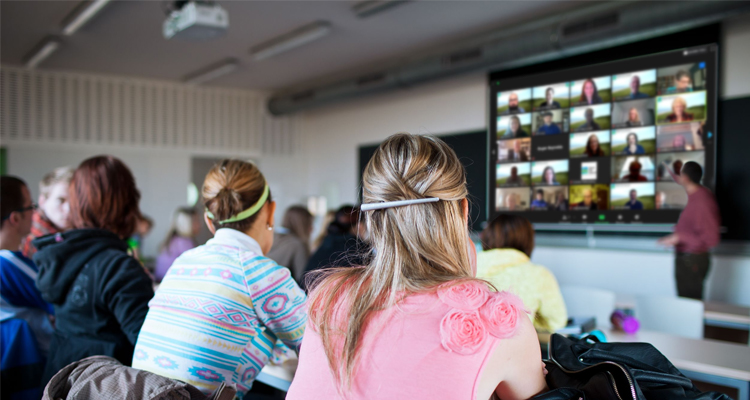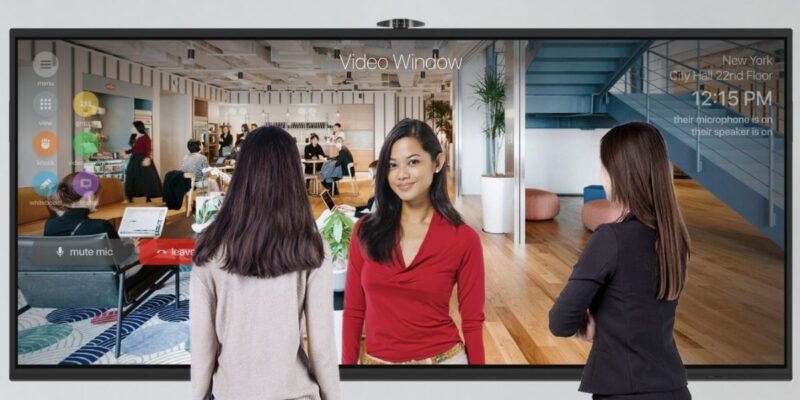The Struggle for ‘Seamless’ Hybrid Experiences
 There are 1,001 blogs on the hybrid workplace and hybrid classrooms. Heck, I may have even contributed to that total. But before you dismiss this one, I’ll tell you it’s short, intuitive and not quite the same as the others.
There are 1,001 blogs on the hybrid workplace and hybrid classrooms. Heck, I may have even contributed to that total. But before you dismiss this one, I’ll tell you it’s short, intuitive and not quite the same as the others.
If you’re doing hybrid meetings or classrooms, you already know the main components:
- Audience facing screen(s) for content and remote participants
- Presenter facing screen(s) for remote participants.
- Microphone for presenter
- Microphone arrays for in-person participants
- Audience camera
- Presenter camera
- Speakers
The other main component is the computer running the software-based meeting platform. Some companies/schools now use higher-end platforms like Barco WeConnect that have additional features or hardware-based codec systems like Cisco that have an MCU Conference Director option. In most cases, organizations are using platforms like Zoom and Teams.
The size of a room often requires a display to be placed at the back of the room and requires the display to be larger than a single LCD screen. There is the option to build a video wall with multiple displays for an instructor to see all remote participants well. They can also use a projection system or utilize direct-view LED (DVLED).
Many of the diagrams I’ve seen show LCD video walls at the rear of the room for this purpose, and I’m here to say that may not be the best option. It has nothing to do with technology but actually has much more to do with the way the current meeting platforms work. The main issue? There isn’t any control of the gallery layout that shows multiple participants.
For instance, if five people join, the top three are scaled in windows left to right with the bottom two centered below them. This means the chances of the gallery lines matching up with the bezels of the video wall are slim. If 16 people in a meeting gallery are being displayed on a 3-by-3 wall, almost every participant will be “interrupted” by the seams in the array (see image below).
 Currently, the software-based codecs don’t have a solution for this. They typically support three screen outputs, with one screen showing content, one showing the gallery and the last one showing the active speaker.
Currently, the software-based codecs don’t have a solution for this. They typically support three screen outputs, with one screen showing content, one showing the gallery and the last one showing the active speaker.
For this reason, using three large-format screens in the front of the room in a 1-by-3 array can make a lot of sense, as the bezels won’t interrupt those three individual layouts. But using multiple displays as a canvas for displaying the gallery leaves a lot to be desired. The current solution would be to make the large gallery view screen seamless, which could be done with a projector and an ambient light rejection screen if you can get enough contrast. You could also utilize direct view LED for the screen instead.
Until the hybrid platforms allow for full control of the gallery layouts and support the option to extend the gallery beyond one logical display, going seamless means a change in the engineering and design. This can be a move away from the software platform altogether or a change in the technology displaying the gallery to eliminate the seams.





